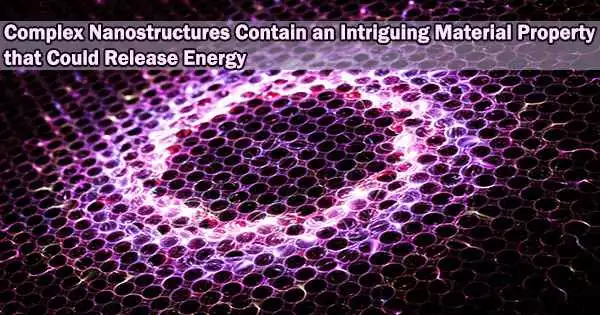Researchers from North Carolina State University and The University of Texas at Austin have found a special feature in complicated nanostructures that had previously only been found in simple nanostructures. They have also uncovered the internal workings of the materials that enable this feature.
The findings were reported in a new publication that appeared this week in the Proceedings of the National Academy of Sciences. The oxide-based “nanolattices” are tiny, hollow structures that resemble the structure of marine sponges.
“This has been seen before in simple nanostructures, like a nanowire, which is about 1,000 times thinner than a hair,” said Yong Zhu, a professor in the Department of Mechanical and Aerospace Engineering at NC State, and one of the lead authors on the paper. “But this is the first time we’ve seen it in a 3D nanostructure.”
The phenomenon in question is called anelasticity. It has to do with how materials respond over time to stressors. Tiny flaws responded to the stress gradient by slowly moving when the materials examined in this work were bent. The minute imperfections progressively revert to their original places after the load is relieved, creating the anelastic characteristic.
This has been seen before in simple nanostructures, like a nanowire, which is about 1,000 times thinner than a hair. But this is the first time we’ve seen it in a 3D nanostructure.
Professor Yong Zhu
The researchers also found that these imperfections release energy dissipation properties when they oscillate. This implies that they have the ability to disperse vibrations and pressure waves.
The material might one day be used as a shock absorber, but only on a very limited scale because it is so light and thin. According to the researchers, it might be useful in electronics chips or other integrated electrical devices.
“You could potentially put this material under the semiconductor chips and protect them from outside impact or vibration,” said Chih-Hao Chang, an associate professor in the Walker Department of Mechanical Engineering at UT Austin.
The next step is to manage these anelastic properties now that they have been identified. To find out how to maximize the anelastic performance for energy dissipation applications, the researchers will investigate the geometry of the nanostructures and conduct experiments with various loading circumstances.





